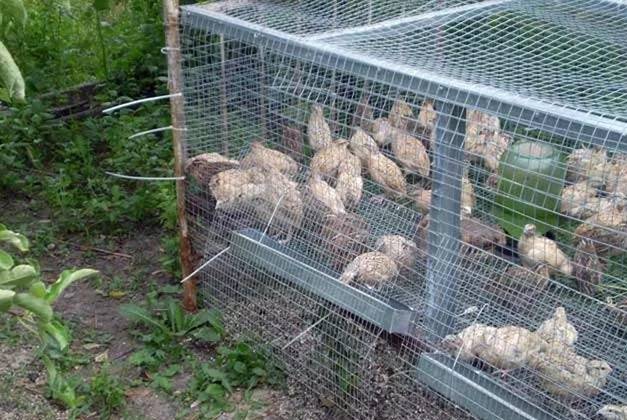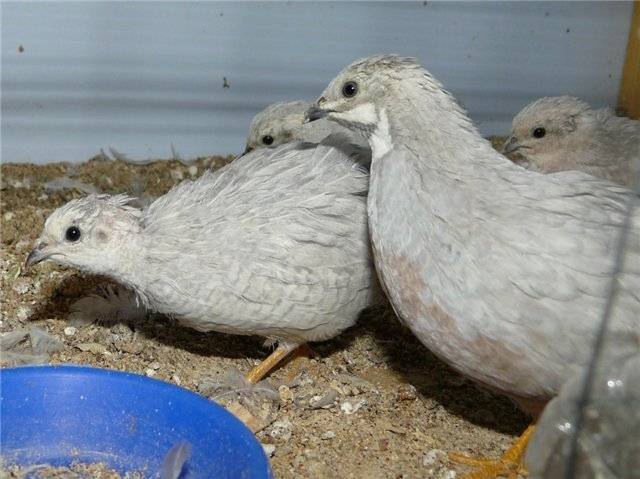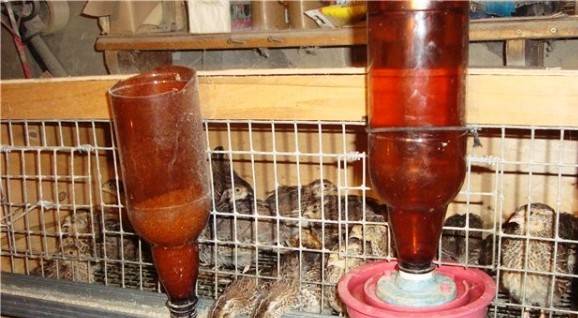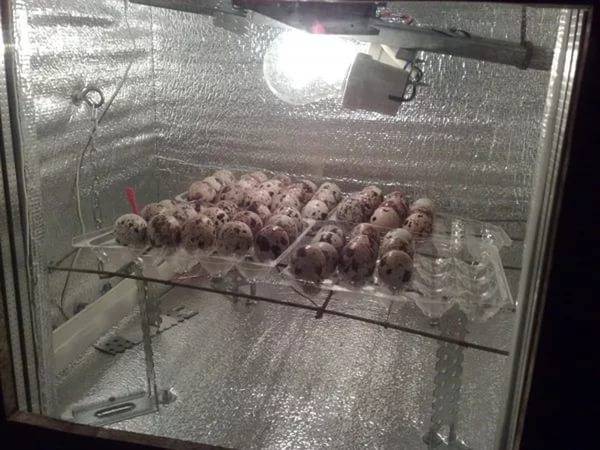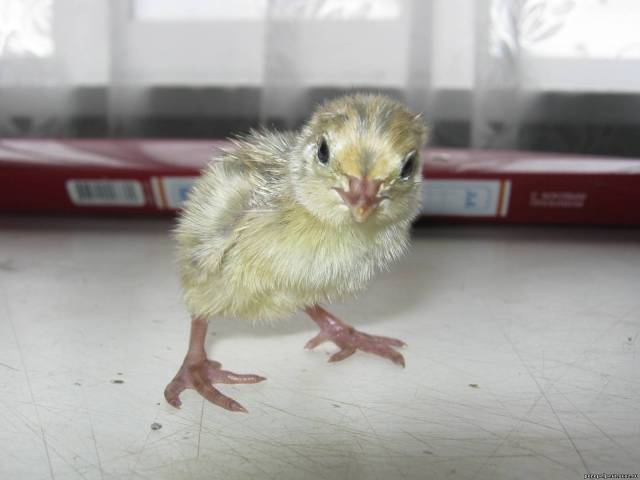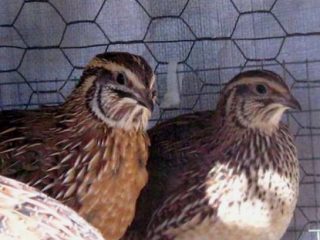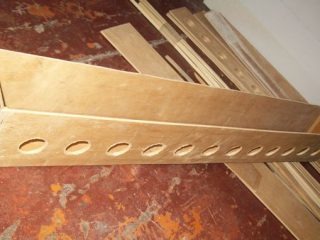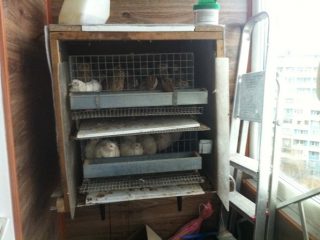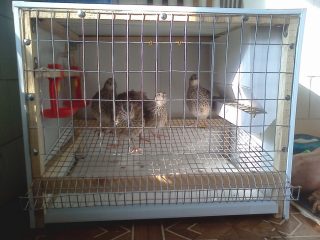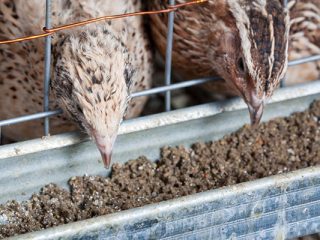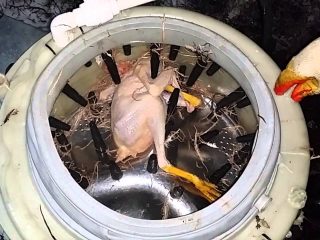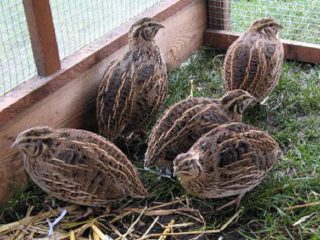Content
Russians took up quail not so long ago, less than half a century ago. But the eggs of these birds have always been in demand by gourmets. The cost of quail meat and eggs is quite high, so quail farming for sale - a profitable business. People always give preference to high quality products that have dietary properties.
Marbled quails also found their place in personal plots and even in apartments. Keeping birds is not difficult, the main thing is to create a comfortable space for them. Marbled quails are usually raised in cages (see photo), so a large area is not required.
Caring for quails of this breed does not create any particular difficulties. You will learn about the basic rules from the article.
Description of appearance, characteristics
Quails of the Marble breed are not found in the natural environment. This is a product of scientists from the All-Russian Institute of Poultry Processing Industry. Was taken as a basis Japanese quail, with which some work was carried out. The testes of Japanese males were irradiated with X-rays. As a result of the mutation, we got the Marbled Quail. The next generations preserve the qualities of the breed.
When describing a new species, they point to an unusual light gray, with a bluish tint, plumage color. Even from a distance you can see that the feathers, intertwining with each other, create a pattern somewhat reminiscent of marble. Hence the name. The color of the quail is clearly visible in this photo.
It is almost impossible to distinguish between a female and a male by color.
Characteristics of Marble Quails:
- An adult Marble breed quail weighs from 150 to 180 grams, females, oddly enough, are heavier - from 180 to 200 grams.
- Carcass length up to 18 cm.
- Marbled quails are raised mainly for their eggs. The weight of one is up to 18 grams. Females lay eggs almost every day; up to 320 eggs can be obtained per year. To obtain one kilogram of eggs from the Marble Quail, 2.6 kg of feed is enough. Since the price of one egg is high, the costs are more than recouped.
The benefits of quail eggs are well presented in the photo table.
Rules of care
Features of feeding
To get one kilogram of nutritious dietary meat, you will have to feed about 4 kilograms of food. According to established rules, Marbled quails need to be fed at least 4 times a day.
Dry food is given separately from the wet mash in special feeders. If you have a large population of Marbled Quails, it is better to use automatic devices; in this case, feed losses are sharply reduced.
The same applies to drinking bowls.The fact is that the Marbled Quail, like other relatives raised at home, must consume only clean water. The slightest contamination can cause intestinal diseases. But it is not always possible to change the water in a regular bowl on time. Drinkers made from plastic bottles, as in the photo, are suitable.
In summer, cages with quails can be placed outside, in winter in sparrowhawks. The air temperature should not drop below +10 degrees. As for air humidity, the optimum is about 55%.
Quails are clean birds; they need a bath. Any container into which ash and sand are poured is suitable for this.
Video about the correct structure of a sparrowhawk:
What to feed adult birds
Quails of the Marble breed are given grain in crushed form:
- corn and wheat;
- millet and oats;
- rice, barley and pearl barley.
Quail breeders feed their pets lentils, soybeans, and peas. They are pre-steamed. No less valuable when growing Marbled Quails are hemp seeds, flax seeds, meal and sunflower cake.
As vitamin supplements, you need to feed quails various vegetables and herbs, adding them to the mash. Beets and carrots are especially necessary for quails in winter.
If there are no special feeds, then the diet of Marble quails, just like its relatives, needs to be supplemented with bone, fish, blood meal. You can replace it with minced meat or fish. The products are boiled, crushed, and added to the mash.
Dairy products are considered easily digestible; cottage cheese is best.
Breeding
Experienced breeders of Marble quails know that domestic birds are not able to hatch quails. Therefore, livestock can be bred artificially using an incubator. Today there is no problem with them. There are many modifications designed for different numbers of eggs.
Marbled quails have small eggs, so they can fit quite a lot. In large farms, when a large number of young animals are required to replenish the livestock, powerful incubators are used. If Marbled quails are bred for private needs, then it is better to breed quails in small incubators.
In private households, devices equipped with glass are often used. This is important especially for novice poultry farmers, so as not to miss the moment the quails appear.
Rules for caring for quails
Marbled quail chicks are usually born on the 17th-18th day. They are covered with light fluff; there are no feathers yet. Marbled quails weigh from 6 to 8 grams. From the first minute they begin to actively explore the space. Just admire the newborn quail in the photo!
Where to drop off
Having selected the babies from the incubator, they need to be placed in a cardboard or plywood box. The size will depend on the number of quails. People involved in breeding Marble quails on a large scale use special brooders. The bottom is covered with pure paper. It is changed as it gets dirty.
A grid is placed on top of the paper; the cell should be 5 by 10 ml.Thanks to it, quails will not develop a specific “split.”
Grown-up quails are transplanted into cages separately from adults.
Conditions of detention
Marbled quail chicks, like all babies, need lighting. From the first days to three weeks, the light should be on 24 hours a day. Then from 3 to 6 weeks: hour of light - hour of darkness. For slightly older chicks, the following regime is set: 3 hours light - 1 hour without it. Later, daylight hours are reduced to 12 hours.
This lighting mode allows for better digestion of food.
In addition, it is required to maintain a certain temperature. It is shown in the table.
Features of feeding
From the first minutes of life, Marbled quails begin to actively search for food. You can use the same food as for adult birds, but in smaller quantities.
Marbled quails grow quickly, so the need for protein, vitamins, and minerals is great.
From the first day of life, chicks are fed:
- chopped boiled chicken eggs;
- cottage cheese, sprinkling it with breadcrumbs;
- greens.
A special compound feed intended for raising hatched chicks of indoor birds, in particular parrots, goes well. Clean water should always be available.
With proper care, little Marbled Quails will look like their parents within a couple of weeks. Body weight will increase 14 times.
Let's summarize
Marbled quails are kept not only for their medicinal meat and eggs. Many people are attracted by the amazing colors of birds. Since caring for them is not particularly difficult, they are bred as decorative ones. Quails are not afraid of people, do not get scared, and most importantly, they never scream. Their pleasant chirping pleases the ear.
